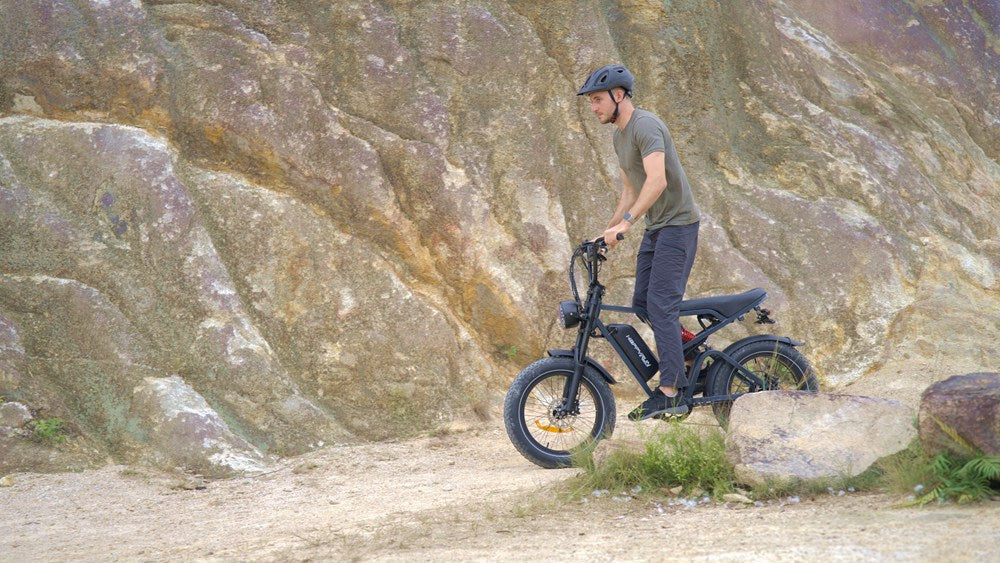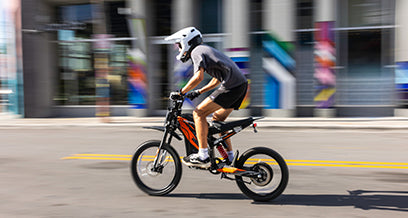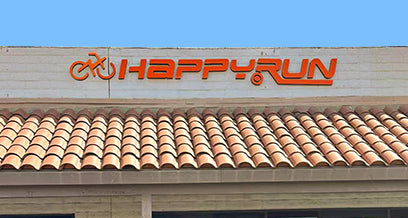
Using an E-Bike: Pedal Assist vs Throttle
When choosing between pedal assist and throttle on an e-bike, riders should consider their preferences, riding style, and intended use.
Throttle systems provide instant power, while pedal assist offers a more traditional cycling experience with added support. Understanding these differences can enhance your riding experience significantly.
When purchasing an electric bike, it is important to consider what form of propulsion you wish to use. E-Bikes come equipped with the ability to assist you in pedaling the bike by making this much easier, or by moving you forward using a throttle alone. Some fat tire electric bikes will come with the ability to do both!
Depending on your interest, ability and comfortability, it is important to consider what type of motor assist is best for you!
What is Throttle Assist and Pedal Assist?
Throttle assist provides power with a twist or push, requiring no pedaling. Pedal assist engages the motor only when you pedal, offering a more natural riding feel.
Pedal assist is the most commonly used operation on e-bikes as all e-bikes must have functioning pedals to be considered an electric bike by definition. In this method, the rider must use the pedals to engage the motor. Once the rider begins pedaling, the motor of the electric bike will begin to work to move the bike along.
This makes pedaling much easier and takes a good portion of the effort off of the rider. To control speed and move the bike faster, or up more steep climbs, many e-bikes will have gear systems that allow the rider to control their pedaling and speed as they would without a motor.
Throttles are mounted to the handlebar. These may be seen in a thumb press model or a twist model throttle. Engaging the throttle starts the motor without the need to pedal, allowing the rider to move freely without using the pedals. In most cases, the speed can be conThrottles are mounted to the handlebar. These may be seen in a thumb press model or a twist model throttle.
Engaging the throttle starts the motor without the need to pedal, allowing the rider to move freely without using the pedals. In most cases, the speed can be controlled with the throttle as well, allowing control over the bike even further.
How Do Throttle and Pedal Assist Differ?
Throttle assist works like a motorcycle, delivering power instantly, while pedal assist enhances pedaling effort, improving efficiency and range.
Throttle and pedal assist are two distinct methods of engaging an e-bike’s motor. Throttle allows riders to control speed directly through a hand-operated mechanism, similar to a motorcycle, providing immediate power without pedaling. In contrast, pedal assist enhances the rider’s effort by delivering additional power based on pedaling input, promoting a more integrated cycling experience.
E-Bike Classes
E-bikes are classified into Class 1 (pedal assist, 20 mph), Class 2 (throttle, 20 mph), and Class 3 (pedal assist, 28 mph), with regulations varying by region.
Electric bikes are placed into a class system based on their form of motor assistance, and their top speed when using the motor. The class system is used in states across the country to allow e-bikes legally in certain areas or bike paths.
The class system ensures that electric bikes are used in a safe manner on various different paths including bike paths, off-road trails, sidewalks and more!
There are three classes in this system. Let’s look into them!
Class 1
An electric bike in class 1 has a motor that only engages when the rider is pedaling and does not have a throttle. The motor is also limited to 20 miles per hour meaning that once the bike reaches 20 miles per hour, the motor will stop assisting the rider.
Class 2
An electric bike in class 2 has a motor that can be engaged with a pedal assist or a throttle. These e-bikes are equipped with pedals and a throttle. These electric bikes also have a limit of 20 miles per hour, but the rider can use either the throttle, or the pedal assist to reach this speed with the assistance of the motor!
Class 3
An electric bike in class 3 has the ability to reach a speed of 28 miles per hour with pedal assist. These e-bikes must have a speedometer to monitor the speed of travel and many of these bikes will have throttles as well.
All of these bikes can reach speeds over 20 miles an hour or even 28 miles an hour if the rider pedals them faster, but the motor will only assist according to its class.
Throttle Use, Advantages and Disadvantages
Throttle allows effortless riding, ideal for quick acceleration, but drains battery faster and reduces exercise benefits compared to pedal assist.
In general, an e-bike will come equipped with a thumb lever or a twist throttle. A thumb lever is typically found near the gears and is pressed using the thumb to engage the motor. In some cases, these levers boost the bike forward. In other uses, the lever is pressed and the motor engages depending on how far the lever is pressed forward, which allows the rider to control the speed at which the bike moves forward. In comparison, a twist throttle is typically mounted onto one of the handlebars. When these types of throttles are twisted, the motor is activated. Depending on how far the throttle is twisted, the bike will move more slowly or more quickly.
Now that we have a basic understanding of how the throttle system works, let’s take a look at some of the advantages of using this system and some of the disadvantages.
What Are the Advantages of Using a Throttle on an E-Bike?
Using a throttle on an e-bike offers immediate power assistance, making it easier to start from a stop or navigate traffic. It reduces physical strain, allowing riders to maintain speed effortlessly, especially on steep hills or challenging terrain. Throttles also provide convenience for those who prefer less pedaling effort.
Throttle systems offer several advantages:
- Instant Power: Riders can accelerate quickly without needing to pedal, which is beneficial in stop-and-go traffic or during quick starts.
- Versatility: Useful for short trips or when navigating challenging terrain where pedaling might be difficult.
- Ease of Use: Ideal for beginners or those who may struggle with traditional cycling, as it requires minimal physical exertion. When using the throttle in situations where you are going against the wind, or up a steep hill, this allows for a much easier ride as minimal effort is required to maintain speed.
- Less Strain: Using the throttle in place of pedaling allows for strain to be taken off of the rider’s legs. For those with arthritis, or knee injuries, this is a great way to enjoy riding a bike without causing further strain on the joints!
- Commuting: Riders who are using their e-bikes to travel will find the throttle useful to cross intersections quickly or to keep up with the flow of other traffic. The throttle allows for a quick start without relying on pedaling.
Disadvantages of Throttle Use
- Battery Life: Throttle systems can drain the battery faster compared to pedal assist modes. When using the throttle alone without pedal assist, the battery will drain much more quickly as the motor is working alone without the assistance of the rider. This is something to consider on rides that may be a bit longer!
- Fitness: Using the throttle consistently can lead to some riders depending on the throttle instead of the pedals. This could lead to less pedaling overall, and a loss in exercise and muscle use while riding.
Pedal Assist Use, Advantages and Disadvantages
Pedal assist requires pedaling to activate motor support, offering a more natural riding experience. Advantages include extended battery life, exercise benefits, and smoother control. Disadvantages include less instant power compared to throttle. It’s ideal for fitness-focused riders or longer commutes.
Many pedal assist systems have levels of motor engagement. For example, in pedal assist level 1, the rider is responsible for pedaling with more effort and the battery and motor are not used as much. At pedal assist level 3, the motor will engage more quickly with the rider pedaling, putting more strain on the motor and battery, and less on the rider. The level of pedal assist allows the rider more capability depending on the level they choose to use during the ride, and this level can typically be adjusted easily while in use.
With this information about the pedal assist system, what are the advantages and disadvantages?
What Are the Benefits of Using Pedal Assist Over Throttle?
Pedal assist offers several benefits over throttle systems, including longer battery life due to reduced motor strain, improved safety through gradual acceleration, and enhanced rider engagement. It promotes exercise by requiring pedaling, making it ideal for fitness enthusiasts while complying with more regulations in many areas.
Choosing pedal assist over throttle can offer several benefits:
- Enhanced Control: Riders maintain greater control over their speed and effort level, making it easier to navigate varied terrains.
- Fitness: Encourages riders to engage in physical activity while still receiving support from the motor. Pedaling with the assistance of a motor is still great for cardiovascular health and muscle growth!
- Battery Efficiency: Since pedal assist conserves energy by engaging only when pedaling, it typically results in better battery life.
- Ease of Use: Most e-bike riders are very familiar with pedaling a standard bicycle and using the gear system, and the pedal assist system will feel very intuitive to them, making the adjustment to a new e-bike easy!
Disadvantages of Pedal Assistance
- Commuting: The pedal assist system will not engage the motor as quickly, leading to a slower build up in speed. This can place riders at a slight disadvantage with crossing intersections or keeping up with traffic.
- For those newer riders, adjusting to learning the gear system and the pedal assistance levels can have a learning curve.
How Does Pedal Assist Enhance Your Riding Experience?
Pedal assist enhances the riding experience by providing a smooth and natural feel, as the motor supports the rider’s pedaling efforts. It allows for customizable assistance levels, making climbs easier and extending range. This system encourages physical activity while reducing fatigue, making longer rides more enjoyable.
- Natural Feel: It mimics traditional biking by rewarding pedaling effort with additional power, making it feel more like cycling.
- Improved Range: Since the motor only activates when pedaling, it generally conserves battery life, allowing for longer rides.
- Health Benefits: Encourages physical activity by requiring riders to pedal, making it suitable for fitness enthusiasts.
Which Riding Scenarios Favor Each System?
- Urban Commuting: Throttle is advantageous for quick starts and navigating through traffic.
- Long-Distance Rides: Pedal assist is preferable for extended journeys where battery efficiency is crucial.
- Hilly Terrain: Both systems can be beneficial; however, pedal assist allows for sustained effort without fatigue.
How Do I Decide Between Throttle and Pedal Assist?
Deciding between throttle and pedal assist depends on your riding style and needs. If you prioritize convenience and minimal physical exertion, a throttle may be best. If you enjoy cycling for fitness or plan longer rides with varied terrain, pedal assist offers a more engaging experience.
- Riding Style: If you prefer a more active role in cycling, pedal assist may suit you better; if you want ease of use, consider throttle.
- Terrain Considerations: Evaluate where you will be riding most frequently—urban settings may benefit from throttle use.
- Fitness Goals: For those focused on fitness, pedal assist encourages more physical activity compared to throttle systems.
What Are Some Common Misconceptions About E-Bike Power Modes?
Common misconceptions about e-bike power modes include the belief that throttle bikes are only for lazy riders and that pedal assist is always better for fitness. In reality, both systems cater to different preferences and needs; riders can choose based on their desired experience rather than fitness levels alone.
- Throttle Equals Laziness: While throttle provides ease of use, it doesn’t negate physical activity; many riders still engage in pedaling.
- Pedal Assist Is Only for Fitness Buffs: In reality, pedal assist benefits riders of all fitness levels by offering support when needed.
- Throttle Drains Battery Too Quickly: While throttle can consume more battery during intensive use, many modern e-bikes are designed to manage energy efficiently even in throttle mode.
Buying Tips
When selecting an e-bike, consider models that offer both throttle and pedal assist options for maximum versatility. Look for reputable brands like HappyRun, known for their innovative designs and commitment to quality since their establishment in 2014. Evaluate factors such as battery capacity, motor type, and frame design to find an e-bike that fits your riding style and needs effectively.
E-Bike Expert Views
“Choosing between throttle and pedal assist ultimately depends on personal preference,” says biking expert John Smith. “Both systems have unique advantages that cater to different riding styles; understanding these can enhance your overall experience.”
Conclusion
Whether you choose to use the pedal assist system or the throttle system, both will serve you well in your e-bike journey! Both offer a great way to get out and ride around town or commute to your next location and because most electric bikes are equipped with both, you can experiment to find the perfect combination for you!
FAQs
What are the key differences between pedal assist and throttle?
Pedal assist enhances your pedaling effort by providing motor support as you ride, making it feel natural. In contrast, throttle allows you to control speed without pedaling, similar to a motorcycle. While pedal assist promotes exercise and longer battery life, throttle offers immediate power for quick starts and less physical exertion.
How does each mode affect your riding experience?
Pedal assist provides a smoother and more engaging ride, requiring you to pedal for assistance, which can enhance fitness. Throttle mode offers convenience and ease, allowing you to accelerate without pedaling. The choice affects how connected you feel to the bike and the overall physical effort required during your ride.
Why might you choose one mode over the other?
Choose pedal assist for a more traditional cycling experience that promotes exercise and endurance over longer distances. Opt for throttle when you need quick acceleration or prefer less physical exertion, such as commuting or navigating through traffic. Your riding goals and preferences will guide this decision.
Which situations favor pedal assist or throttle usage?
Pedal assist is ideal for hilly terrain or long rides where sustained effort is beneficial. It helps conserve battery life while providing a workout. Throttle is better for flat routes, quick starts, or when you need a break from pedaling, such as in stop-and-go traffic or during short errands.
How do your riding habits influence your choice of e-bike mode?
If you enjoy exercise and longer rides, pedal assist may suit your style better, enhancing fitness while riding. Conversely, if you prefer convenience and quick trips without much physical effort, throttle mode might be the right choice. Your typical routes and desired level of activity will impact your mode preference.
































Leave a comment